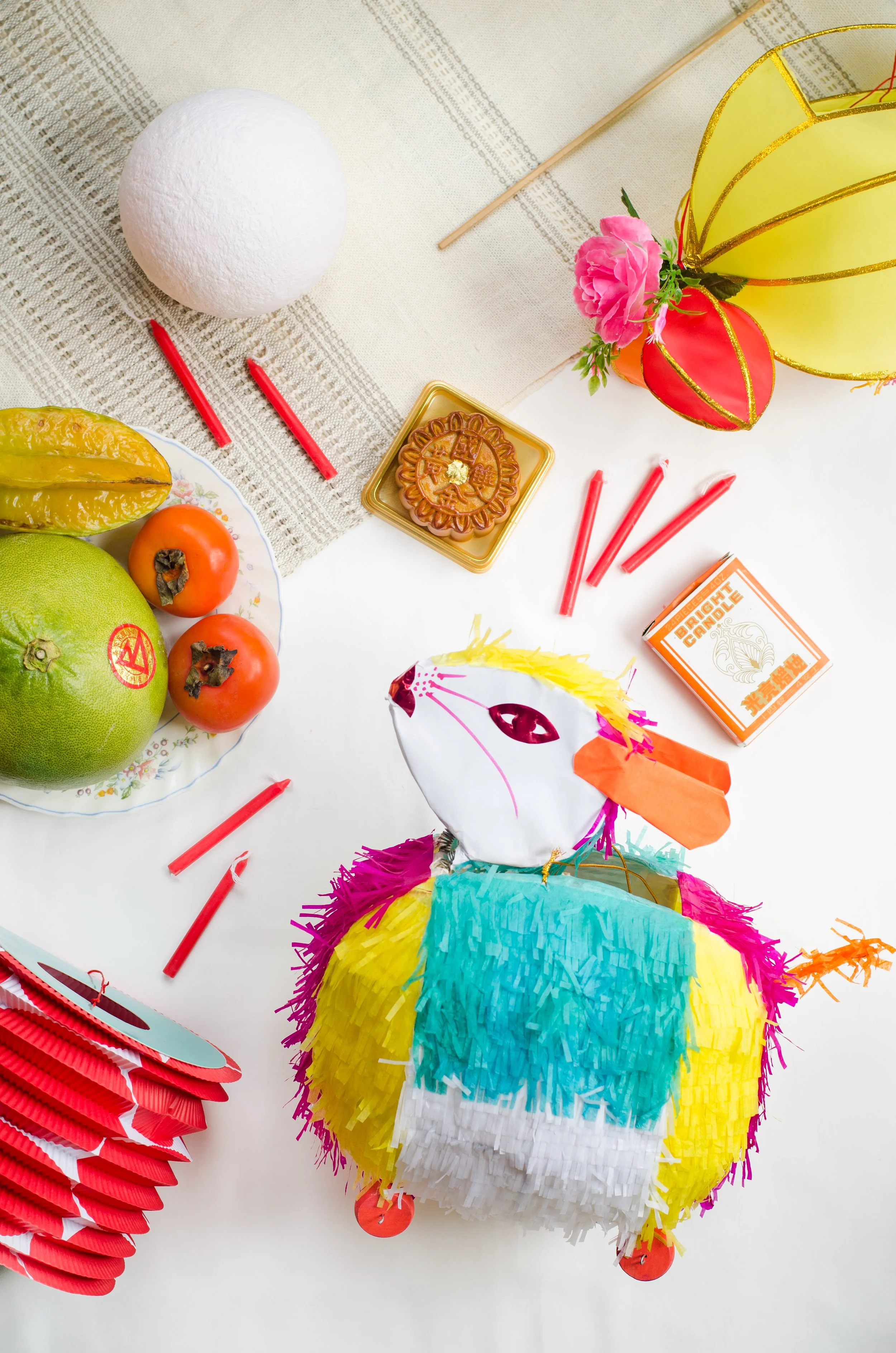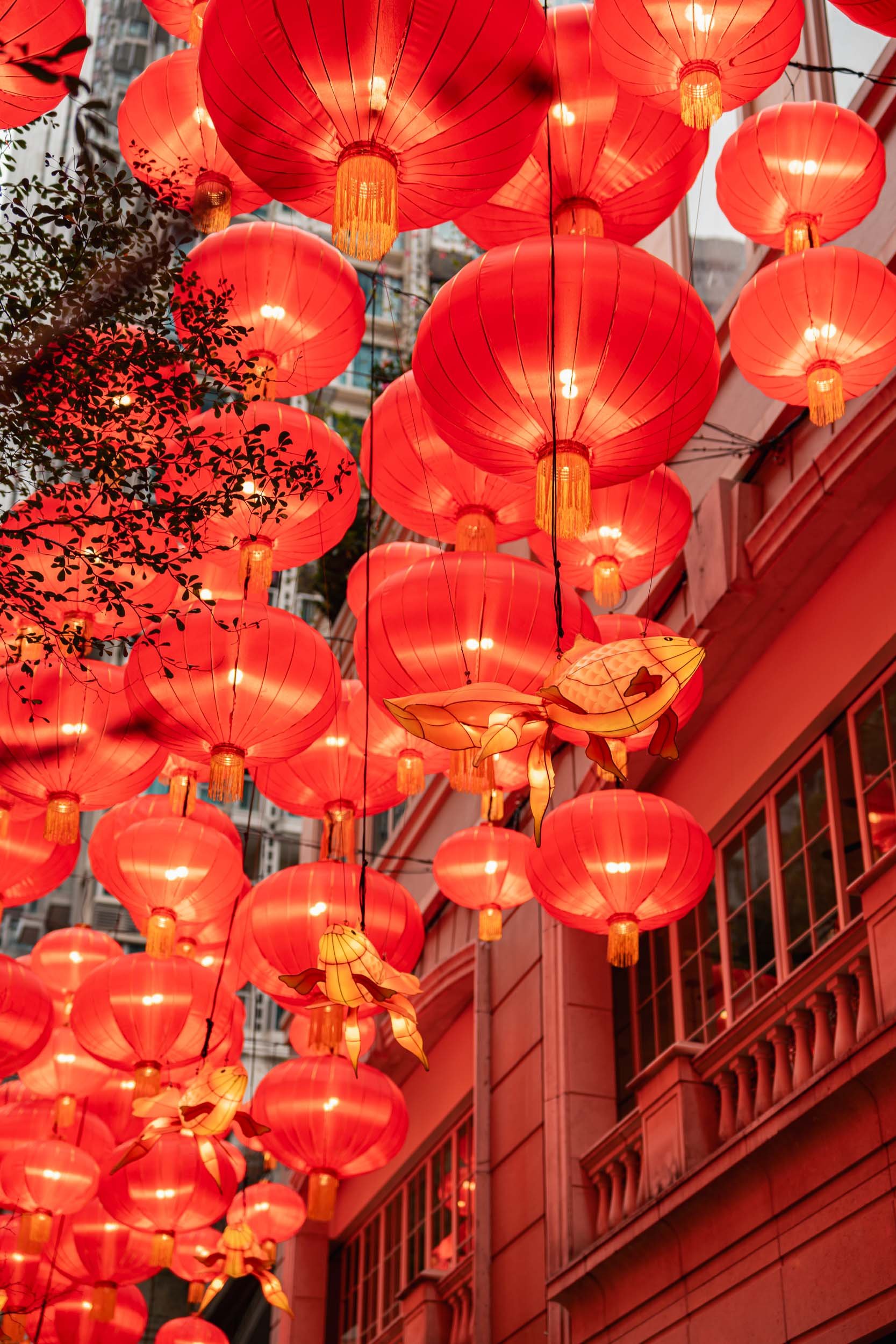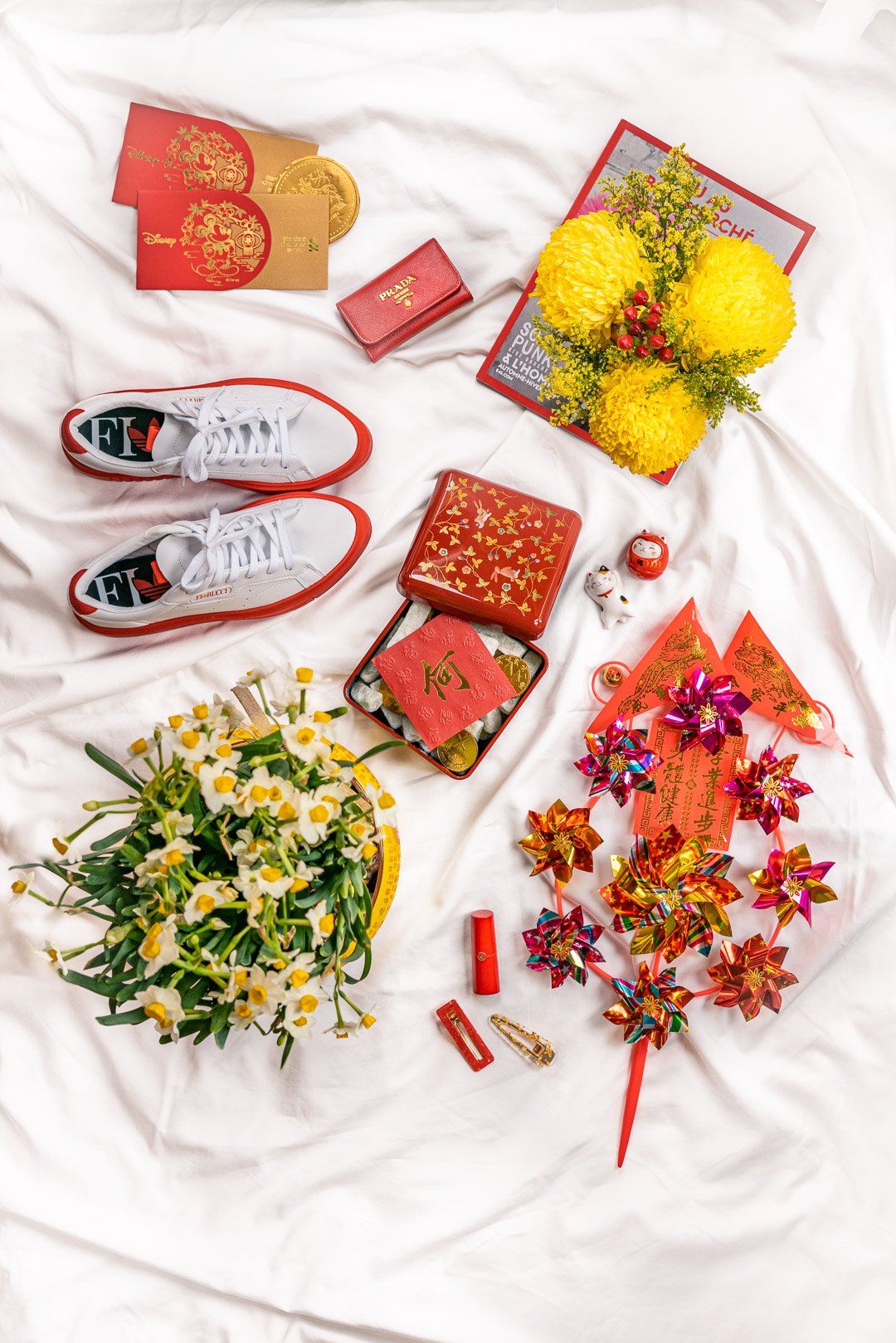There’s More to the Mid-Autumn Festival than just Mooncakes
Did someone mention mooncakes?
The Mid-Autumn Festival, also known as the Moon Festival or Mooncake Festival, is one of the major holidays in Chinese culture; its popularity is on par with the Chinese New Year and akin to the Hong Kong equivalent of Thanksgiving.
Traditionally celebrated in Chinese culture to celebrate a bountiful crop harvest, it is held on the brightest full moon day of the year–the 15th day of the 8th lunar month, corresponding to somewhere between mid-September and early October of the Gregorian calendar.
It also happens to be my favourite Chinese festival–there’s good food and entertainment, but it’s not as in-your-face as Chinese New Year and much less of an assault on your senses. While important, it’s also less of an international tourist attraction, so the atmosphere feels much more local.
Fun fact: Since most Mid-Autumn celebrations occur at night, the day after the Mid-Autumn Festival is a public holiday instead of the festival date itself. If the day after the festival falls on a Sunday, the following Monday will be designated a public holiday. Metro services are also extended to run overnight, like Christmas Eve and New Year’s Eve.
Folklore
There are many folk stories in Chinese mythology regarding the festival’s origins, but the most well-known is the tale of Hou Yi and Chang’e. According to legend, there were once ten suns in the sky before the brave archer Hou Yi shot down nine to save the earth from being scorched. As a reward for this heroic deed, Queen Mother granted him an elixir of immortality. Unfortunately, Hou Yi’s wife, Chang’e, was forced to consume it herself when a villain tried to steal the elixir. Weightless and immortal, Chang’e ascended until she reached the moon, where she has since resided as the Moon Goddess with her companion, the Jade Rabbit, which is why the rabbit is a popular motif around this time of the year.
Traditions
Mooncakes
Is it even a proper Mid-Autumn Festival if you haven’t had a mooncake (or two)?
The rich pastry originated during the Yuan Dynasty in China, where they were used to smuggle messages and plan an uprising on the night of the full moon. With round shapes representing reunion and completeness, their auspicious symbolism is why they are frequently gifted between friends, families, and clients to be enjoyed during the festival. And because of their popularity, mooncake tins often require pre-ordering ahead of time, just like Chinese New Year puddings.
Mooncakes come in many varieties, characterised by a rich filling surrounded by a thick crust. Because of their dense texture, they’re often eaten in wedges and accompanied by tea.
Traditional mooncakes – The OG (and my favourite) consists of a thick, smooth pastry skin enveloping a soft white lotus filling with two salted egg yolks in the centre to symbolise the full moon (雙黃白蓮蓉). An elaborate design of the bakery’s name and the filling with floral embellishments are imprinted on the top of the mooncake for decorative purposes. Maxim’s (美心西餅) and Kee Wah Bakery (奇華餅家) are popular contenders.
Snowy mooncakes – Pioneered by Taipan (大班) in 1989, snowy mooncakes are a lighter delicacy with a white, chewy, mochi-like skin that is served cold. While often filled with green bean paste, they have evolved into an endless stream of new dessert flavours that keep them relevant. Popular flavours include mango pomelo sago, a beloved local dessert, and the love-it-or-hate-it durian.
Custard mooncakes – A fusion of tradition and modernity, custard mooncakes were said to have been invented by the chef of The Peninsula Hotel’s Spring Moon and inspired by local custard buns. Similarly, they contain a filling of salted egg yolk that is recommended to be warmed before tasting so that it oozes out like lava. They are also typically daintier in size and come in more exquisite packaging than their classic counterparts, which explains why they are a common choice in business gift hampers. If you’re ready to fork out some cash, Peninsula Boutique (半島精品店) and Imperial Patisserie (皇玥) make gorgeous custard mooncakes.
Family Dinners and Moongazing
The Mid-Autumn Festival is not nicknamed the Moon Festival for no reason. Because the full moon represents reunion and completeness, families gather for dinner, which often ends with a platter of seasonal fruits like starfruit and pomelo, as well as mooncakes.
Although temperatures have risen through the years, the festival still marks autumn, with the evening air turning slightly crisper. After dinner, friends and families often walk along public parks and open spaces to admire the view of the bright full moon, sometimes even setting up tents under the moonlight. Some of the best spots in town include West Kowloon Park, Sun Yat Sen Memorial Park, Tamar Park, and the waterfront promenade.
Lantern Displays
A unique custom of the Mid-Autumn Festival is to carry colourful lanterns through the streets after sunset. Children used to make and decorate their paper lanterns, but with scores of lantern shops sprouting up across town, consumers are spoiled for choice, and lantern-making has largely gone out of fashion. Lanterns come in all shapes and sizes, loosely falling under three categories:
Paper lanterns — These were the cheap but traditional lanterns of the old days, packed flat and can easily be found in stationery or supply stores. Often round or cylindrical once expanded, they were modestly hung on bamboo chopsticks with a single red candle placed inside.
Bamboo lanterns — Another traditional style that required craftsmanship rapidly disappearing. Thin bamboo sticks would be bent into a lightweight but incredibly rigid frame, over which bright fabric would be stretched taut and sometimes decorated with intricate paper fringing and hanging tassels. Popular shapes include starfruit and rabbits, all popular motifs for the festival.
Plastic lanterns — Growing up, my peers always sported battery-operated lanterns with the latest cartoon characters and a song that’s always out of tune. Although not to my taste, I always found them more funny in an endearing way than cringey.
During the festival, lantern displays make for some of the most spectacular sights around the city. Many parks, shopping malls, and temples create giant illuminated installations that have become popular tourist attractions. Pop by Victoria Park for the largest Mid-Autumn carnival in town–it’s tacky at best, but the local atmosphere makes up for it.
Traditionally, people would partake in solving lantern riddles, too. Riddles, usually containing auspicious messages of wisdom and good fortune, would be written on slips of paper and hung from lanterns, and families would gather around for a good laugh.
Wax Burning
Now, this is an interesting and controversial one often known as “煲蠟” in Chinese, literally “boiling wax”.
It started with mooncake gifting, a popular gesture that left families with piles of empty tins at the end of the Mid-Autumn Festival. Before smartphones and computers existed, there were limited forms of entertainment at the park (you could only eat as many mooncakes and stare at the full moon for so long), and spare candles from lanterns would be lit in tin boxes until they melted into red puddles. The mischievous would even throw water on top to create a fireball and set the tins on fire.
The government cracked down on the practice in the 90’s, issuing public bulletins about its dangers and stepping up patrols during the holiday season. But wax burning remained an indelible part of their childhood for many generations, and many look fondly upon it as a rite of passage.
Disclaimer: Wax burning is dangerous and is a nightmare to clean up. Please don’t partake in activities that endanger yourself and others.
Glow Sticks
A much safer form of entertainment that entered the scene after wax burning, glow sticks were another beloved and affordable toy for the Mid-Autumn Festival. Thinner tubes would be bent into connectors, creating glow-in-the-dark bracelets, flowers, and balls that could be tossed around for fun. Because a limited number of connectors are included in each pack, kids would save and reuse them the following year.
My favourite colours were always pink and blue (yellow and green were too mainstream, red too dim, and everyone seemed to despise orange), and I used to leave them overnight in my room until they faded into nothing.
Regrettably, following the ban on disposable plastic products in Hong Kong, 2024 marks the last year glow sticks can be sold in the city.
Fire Dragon Dance
The fire dragon dance is a true spectacle that originated as a ceremonial practice to protect the neighbourhood from plagues and is still upheld by a dedicated Hakka community. Listed as a national Intangible Cultural Heritage, this century-old tradition draws crowds to Tai Hang yearly, with roads around Causeway Bay cordoned off.
The entire fire dragon consists of its head (weighing 48kg!), tail and a 67-metre body of 31 sections made of rattan frames and adorned with 12,000 burning incense sticks. The fire dragon parades around Tai Hang in a clockwise direction under the beat of the drum, performing stunts along the way.
Popular Sayings
If you’re meeting friends and family during the festival, an easy greeting to say is simply “中秋節快樂” (Happy Mid-Autumn Festival). You may also see “人月兩團圓”, though it is mostly written than said, which expresses the poetic sentiment of reuniting loved ones as the moon turns full.
It’s an apt way to sum up the Mid-Autumn Festival, which will always hold a special place in my heart for culture, traditions, and togetherness. Nothing beats enjoying a moment of tranquillity under a full moon with the weather taking a good turn. And though the moon may be a metaphor for many things, the most important is the time we spend with our loved ones and the connection we share across time and space.
To wrap things up, I’ll share one of the most well-known poems in Chinese literature, “Water Melody” by Su Shi, which was so popular that it’s been written into a song sung by pop artist Faye Wong.
“明月幾時有?把酒問青天。不知天上宮闕,今夕是何年?
我欲乘風歸去,又恐瓊樓玉宇,高處不勝寒。 起舞弄清影,何似在人間?
轉朱閣,低綺戶,照無眠。
不應有恨,何事長向別時圓?
人有悲歡離合,月有陰晴圓缺,此事古難全。但願人長久,千里共嬋娟。”
Most know its last line best, which likens the sorrows and joys of men to the moon’s waxing and waning, where nothing is perfect. But may loved ones live on, so we may share the moonlight and all things beautiful though a thousand miles apart.
This post may contain affiliate links, meaning we receive a commission when you click and make a purchase.
Related Posts












